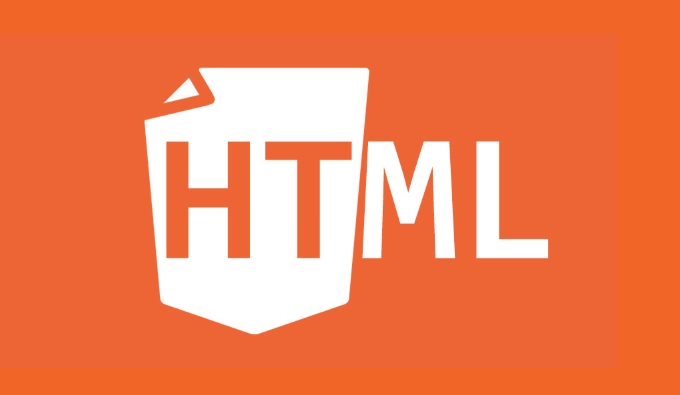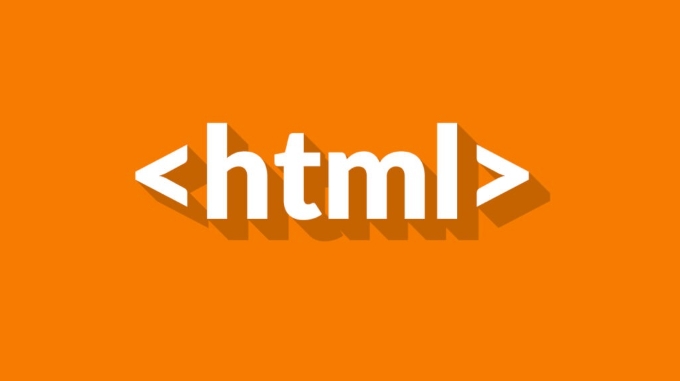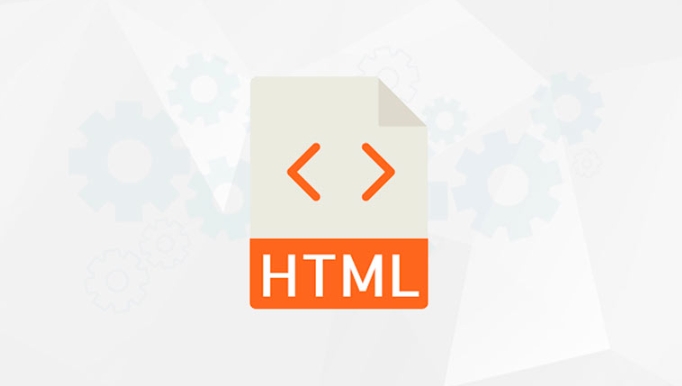How to create hyperlinks using the anchor tag in html?
Jul 05, 2025 am 01:41 AMThe method of creating a hyperlink in HTML is as follows: 1. Use the tag, set the href attribute to specify the target address, and the tag content is clickable text; 2. When linking an internal page, href can use a relative or absolute path; 3. Add target="_blank" to achieve a new window opening, and it is recommended to cooperate with rel="noopener"; 4. Use #id to achieve jumps within the page, and the target element needs to set the corresponding id. Mastering these structures and attributes can achieve diverse link functions.

Creating a hyperlink in HTML is actually very simple, mainly using the <a></a> tag, that is, the anchor tag. You only need to master a few basic structures and attributes to easily achieve page redirection or link to other websites.

Basic structure: Start with a link
The most basic way to write it is:

<a href="https://example.com">Click here to visit the sample website</a>
href attribute determines the target address that jumps after clicking, and the text between the two tags is the clickable content that the user can see. You can place it outside a paragraph, button or picture to achieve different display effects.
It should be noted that the value of href must be correct , otherwise the link will fail. If you just want to make a placeholder link, you can write it as href="#" , but remember to replace it before going online.

Link internal page: How to jump within the website
If you want to link to other pages of your website, such as "About Us" or "Contact Us", the same is true:
<a href="/about.html">About Us</a>
The path here can be a relative path (as in the example above) or an absolute path (starting with a domain name). Pay attention to the folder structure when using relative paths, otherwise 404 errors are prone to occur.
Common practices are:
- Put all pages in the same directory for unified management
- Use structured paths like
/pages/about.htmlto improve readability - Use absolute paths in the main menu to avoid errors
Open a new window or tab: Do you want the user to leave the current page?
Sometimes you want the link to open in a new window, you can add target="_blank" attribute:
<a href="https://example.com" target="_blank">Open link in new window</a>
This setting is useful for guiding users to access external resources, but there are some details that need to be paid attention to:
- It is best to use it with
rel="noopener"to prevent security vulnerabilities - It is not recommended to use frequently unless the user is really required to retain the current page at the same time
- The experience of opening a new tab on the mobile terminal may not be as smooth as that on the desktop terminal
Bookmark the link: Jump to a specific location on the page
In addition to jumping to another web page, you can also use the anchor to jump directly to a part of the current page. For example:
<a href="#section1">Skip to Part 1</a> <!-- The bottom of the page--> <h2 id="section1">Part 1</h2>
This writing method is often used for long page navigation, help documents, or FAQ pages. Just add id to the target element and then use #id名in href to achieve fast positioning.
Basically that's it. Although the <a></a> tag looks simple, flexible application in actual development can solve many navigation and interaction problems.
The above is the detailed content of How to create hyperlinks using the anchor tag in html?. For more information, please follow other related articles on the PHP Chinese website!

Hot AI Tools

Undress AI Tool
Undress images for free

Undresser.AI Undress
AI-powered app for creating realistic nude photos

AI Clothes Remover
Online AI tool for removing clothes from photos.

Clothoff.io
AI clothes remover

Video Face Swap
Swap faces in any video effortlessly with our completely free AI face swap tool!

Hot Article

Hot Tools

Notepad++7.3.1
Easy-to-use and free code editor

SublimeText3 Chinese version
Chinese version, very easy to use

Zend Studio 13.0.1
Powerful PHP integrated development environment

Dreamweaver CS6
Visual web development tools

SublimeText3 Mac version
God-level code editing software (SublimeText3)

Hot Topics
 How do I stay up-to-date with the latest HTML standards and best practices?
Jun 20, 2025 am 08:33 AM
How do I stay up-to-date with the latest HTML standards and best practices?
Jun 20, 2025 am 08:33 AM
The key to keep up with HTML standards and best practices is to do it intentionally rather than follow it blindly. First, follow the summary or update logs of official sources such as WHATWG and W3C, understand new tags (such as) and attributes, and use them as references to solve difficult problems; second, subscribe to trusted web development newsletters and blogs, spend 10-15 minutes a week to browse updates, focus on actual use cases rather than just collecting articles; second, use developer tools and linters such as HTMLHint to optimize the code structure through instant feedback; finally, interact with the developer community, share experiences and learn other people's practical skills, so as to continuously improve HTML skills.
 How do I embed PHP code in an HTML file?
Jun 22, 2025 am 01:00 AM
How do I embed PHP code in an HTML file?
Jun 22, 2025 am 01:00 AM
You can embed PHP code into HTML files, but make sure that the file has an extension of .php so that the server can parse it correctly. Use standard tags to wrap PHP code, insert dynamic content anywhere in HTML. In addition, you can switch PHP and HTML multiple times in the same file to realize dynamic functions such as conditional rendering. Be sure to pay attention to the server configuration and syntax correctness to avoid problems caused by short labels, quotation mark errors or omitted end labels.
 How do I embed video in HTML using the element?
Jun 20, 2025 am 10:09 AM
How do I embed video in HTML using the element?
Jun 20, 2025 am 10:09 AM
To embed videos in HTML, use tags and specify the video source and attributes. 1. Use src attributes or elements to define the video path and format; 2. Add basic attributes such as controls, width, height; 3. To be compatible with different browsers, you can list MP4, WebM, Ogg and other formats; 4. Use controls, autoplay, muted, loop, preload and other attributes to control the playback behavior; 5. Use CSS to realize responsive layout to ensure that it is adapted to different screens. Correct combination of structure and attributes can ensure good display and functional support of the video.
 How do I minimize the size of HTML files?
Jun 24, 2025 am 12:53 AM
How do I minimize the size of HTML files?
Jun 24, 2025 am 12:53 AM
To reduce the size of HTML files, you need to clean up redundant code, compress content, and optimize structure. 1. Delete unused tags, comments and extra blanks to reduce volume; 2. Move inline CSS and JavaScript to external files and merge multiple scripts or style blocks; 3. Simplify label syntax without affecting parsing, such as omitting optional closed tags or using short attributes; 4. After cleaning, enable server-side compression technologies such as Gzip or Brotli to further reduce the transmission volume. These steps can significantly improve page loading performance without sacrificing functionality.
 How has HTML evolved over time, and what are the key milestones in its history?
Jun 24, 2025 am 12:54 AM
How has HTML evolved over time, and what are the key milestones in its history?
Jun 24, 2025 am 12:54 AM
HTMLhasevolvedsignificantlysinceitscreationtomeetthegrowingdemandsofwebdevelopersandusers.Initiallyasimplemarkuplanguageforsharingdocuments,ithasundergonemajorupdates,includingHTML2.0,whichintroducedforms;HTML3.x,whichaddedvisualenhancementsandlayout
 How do I use the element to represent the footer of a document or section?
Jun 25, 2025 am 12:57 AM
How do I use the element to represent the footer of a document or section?
Jun 25, 2025 am 12:57 AM
It is a semantic tag used in HTML5 to define the bottom of the page or content block, usually including copyright information, contact information or navigation links; it can be placed at the bottom of the page or nested in, etc. tags as the end of the block; when using it, you should pay attention to avoid repeated abuse and irrelevant content.
 What is the declaration, and what does it do?
Jun 24, 2025 am 12:57 AM
What is the declaration, and what does it do?
Jun 24, 2025 am 12:57 AM
Adeclarationisaformalstatementthatsomethingistrue,official,orrequired,usedtoclearlydefineorannounceanintent,fact,orrule.Itplaysakeyroleinprogrammingbydefiningvariablesandfunctions,inlegalcontextsbyreportingfactsunderoath,andindailylifebymakingintenti
 How do I use the tabindex attribute to control the tab order of elements?
Jun 24, 2025 am 12:56 AM
How do I use the tabindex attribute to control the tab order of elements?
Jun 24, 2025 am 12:56 AM
ThetabindexattributecontrolshowelementsreceivefocusviatheTabkey,withthreemainvalues:tabindex="0"addsanelementtothenaturaltaborder,tabindex="-1"allowsprogrammaticfocusonly,andtabindex="n"(positivenumber)setsacustomtabbing






